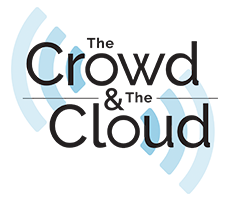
Newsletter
Sign up and stay in-the-know about The Crowd & The Cloud and the world of citizen science.
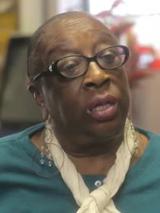
My name is Ms. Margaret Gordon. I am the Founder and a Co-Director of the West Oakland Environmental Indicators Project.
Tell us a little about your neighborhood?
I am a third generation West Oaklander. My grandparents came here to the Bay area during the war. I've been actively involved in the development of the West Oakland Environmental Indicators Project for almost 17 years, and involved in social justice for over 50 years. West Oakland is the first neighborhood when you come off the Bay Bridge.
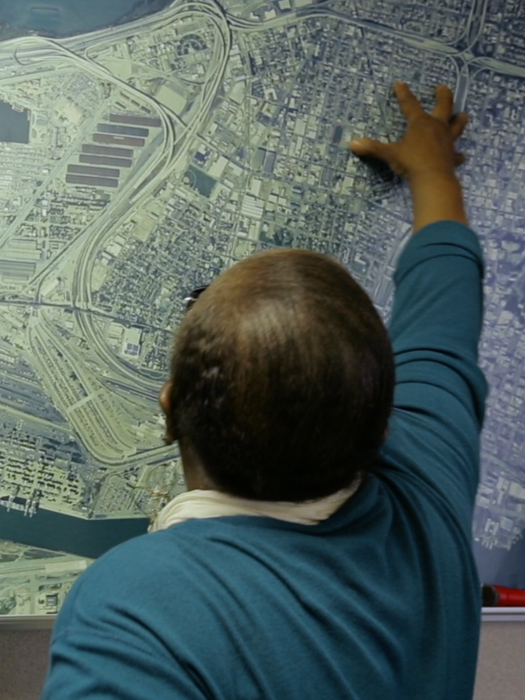
Margaret showing how her neighborhood, West Oakland, is surrounded by industry.
The majority of the population is African-American. Most people came to West Oakland during World War II, either working at the military bases or the port. This was also a factory community. Many families have been here for at least 50 years. The port is over 500, maybe more than that, acres of land. They have anywhere from 12 to 18 docks. They move on average, maybe 500,000 containers a year, plus.
It was a poorly planned community. We've always had industrial businesses right next to where people lived. Then came the cable cars, bus systems, bridge, and a big push to expand the port. As that happened, the city was never totally engaged in an appropriate proximity for where people lived, and where industry or transportation was occurring. Only in the last 15 years, the state of California has been more involved in regulating where people are, and people's health.
What kinds of health impacts has industry had on people in West Oakland?
There's a lot of cumulative impacts. Public health has no authority in regulating zoning and planning. Everything is either a “guideline” or a “recommendation.” What we do know via studying the Indicators, is that one out of five children, at one time, was going to the emergency hospital from our zip code. We knew that these children, through hospital data, were being treated for asthma. We knew that there was a high level of respiratory cancers and different types of ailments. Having that research and that data, we have been able to get the state to be more robust in getting the port to do something. For example, 24 miles out, before you get to California, a ship has to change the type of fuel they use to have less sulfur. All ports are plugged in (to electric power) so the auxiliary engine is not constantly running and giving off diesel particulates out of the smokestack. All trucks that come into the port cannot be older than 2008.
What kinds of indicators are measured by the Indicators Project?
Anything can be an indicator. We wanted to measure how much trash is dumped on the street, what is the smell in the air, how many trucks are coming through the neighborhood, and how often they were coming. We wanted to know how many people are getting education, what are the resources here in the neighborhood? We measure all those different things. Most citizen science, they'd be talking about birds and flowers and trees. We'd be talking about human beings. Most organizations, when they say citizen science, they don't see urban pollution as an impact or a connection to the other citizen science groupings. The connection is, everybody needs to breathe clean air. Our animals, our birds, they are being impacted by the air quality.
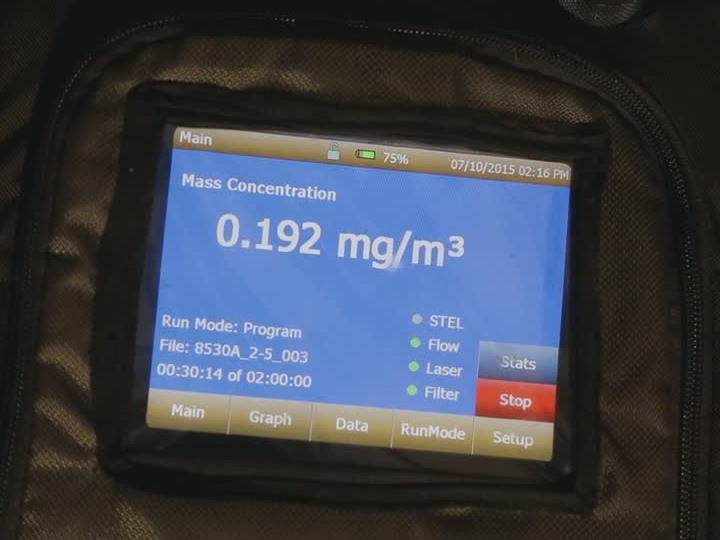
A reading from the DustTrak aerosol particle monitor used by WOEIP volunteers.
What kind of research are you doing on air quality?
In 2009, we were approached by Intel. They had heard about us doing indoor and outdoor air quality studies, through community participatory research within the neighborhood. They came to us, and we developed a relationship with three other scientists. Those three scientists helped us put together the air monitoring study in West Oakland. Intel’s equipment has given us the ability to be more grounded with our findings. As we do our routes, if we have the spike in pollution on that route, we know that either that was someone burning something or it was an older truck from the neighborhood.
We have trained about one hundred people a year on how to use that equipment. It's a small device that has a GPS on it. It calculates what's in the air. Mostly, particulate matter from diesel, and other smoking things. That data's collected and is transported to a computer. Then there's a graph that comes up from the GPS that identifies a hotspot, if something was giving off a large level of toxins. Most of the time, we use air quality studies to confront either the city or the port. We use information from either Bay Area Air Quality District or California Air Resources Board.
How does gathering data help community member become more aware of issues?
At first, people were saying, "Why is this truck on my block, in my neighborhood?” Well, let’s solve that problem, that's how we simplified citizen science. We take that as a methodology of trying to get people to really start engaging in thinking. "Why does it have to be in my neighborhood?” We make it very personal to people and they want to know the answer. People want to know about the science behind the reports. They're getting to the root causes. Then from the root causes, "Well, what do we do next?"

EBAYS students recording air quality data in the BART transit system.
How have the city and port responded to the work that you guys have done?
The port gets its marching orders from the state of California and from the Feds. We always have our Bay Area Air Quality to back us up about something from the port. But the city? The only one who has our back as a community to bring issues of anything that has to do with trucks, is the federal government’s Department of Transportation. The County Public Health Department supported us because of all the asthma related pneumonia cases. When we started understanding that emission reduction planning needed to be happening, the new truck route came about. Because we had the businesses, the truck drivers, the truck driver's businesses, the community, the Public Health Department, the EPA, the Bay Area Air Quality Management District, and the California Air Resources Board all sitting down together with the City of Oakland. That meant the port had to come and sit down. It took two years to get the trucks rerouted out of our neighborhoods. That meant that the trucks no longer parked in our neighborhood. They no longer were idling in our neighborhood. This was one big package of having that data and research be able to take action. Action and activities to have an outcome of separating where this industry is and where the people are.
What kinds of lessons would you like the EBAYS volunteers to take away?
They don't have to put up with stuff. They don't have to put up with things that impact their health. There's tools. There's resources. You don't have to be impacted by poor air quality, poor housing, lack of resources in your neighborhood. You can make those changes. You don't have to put up with things that are going to harm you or your family.
